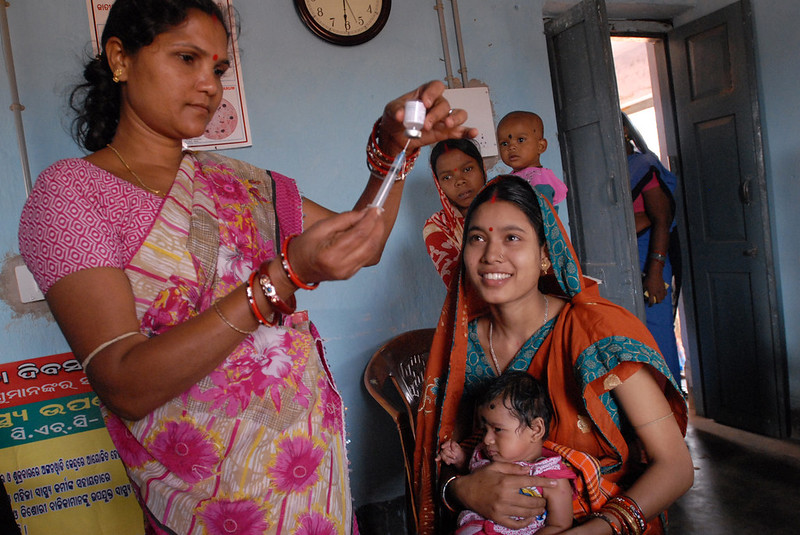Humanitarian Aid International: Addressing Poverty in India
 India, especially its rural communities, suffers from widespread poverty and income inequality induced by a long history of colonization. Statistically, almost 60% of India’s population lives on $3.10 a day, the World Bank’s median poverty line. Humanitarian Aid International (HAI), an Indian nongovernmental Organization (NGO), seeks to lift people from local communities out of systematic poverty by utilizing a unique humanitarian aid model.
India, especially its rural communities, suffers from widespread poverty and income inequality induced by a long history of colonization. Statistically, almost 60% of India’s population lives on $3.10 a day, the World Bank’s median poverty line. Humanitarian Aid International (HAI), an Indian nongovernmental Organization (NGO), seeks to lift people from local communities out of systematic poverty by utilizing a unique humanitarian aid model.
About Humanitarian Aid International
Humanitarian Aid International started like any other NGO. It was formed by a team of professional humanitarian workers and academics whose purpose was to alleviate poverty in the local communities of India. After realizing how international NGOs often neglect the opinions of local NGOs while making critical decisions, HAI broadened its purpose to include the representation of local NGOs in national and international humanitarian circles. HAI’s model for providing aid to communities prioritizes understanding the local context, which includes the communities’ cultural beliefs and practices behind their poor conditions. The organization determines the aid it provides with this local context in mind.
Working at the Local Level
India is one of the world’s most religiously and ethnically diverse countries. Therefore, Indian communities often suffer from unique economic problems shaped by their cultural traditions and history, one example being the severe income inequality between higher and lower castes. HAI considers factors such as discrimination and equity in determining aid for impoverished communities. Consequently, the nonprofit can develop multifaceted responses to complex issues.
In the case of Hindu refugees fleeing persecution in Pakistan, HAI was able to gain a profound understanding of the refugees’ plight by constantly interacting with them respectfully and inquisitively. Realizing that the refugee camps lacked not just electricity but also educational facilities and clean running water, HAI actively provided resources to satisfy these needs; they adapted the aid to reflect the non-Western reality of these camps, evident in the Hindi lessons for children and adults alike.
Interview With David Leitner
David Leitner, a professor of Cultural Anthropology at Las Positas College, Livermore, California, explains how communities perceive the world in unique ways. According to Leitner, these perceptions shape the communities’ material needs. Humanitarian organizations like HAI need to understand these material needs to optimize the aid they provide.
“Culture is both a sort of lens through which you interpret your experiences and also a tool kit you have available to react to the world in response to your needs and wants,” said Leitner. HAI also utilizes its model of understanding local context to promote and advance children’s and women’s rights, ideas that vary locally and nationally based on cultural and social differences.
Why This Is Important
According to Leitner, no two communities share everything in common. Therefore, utilizing a universal model to provide aid to local communities can be ineffective since “If both sides have different assumptions about the problem that needs to be solved, it can lead to some serious misunderstandings.” Additionally, understanding a community’s specific economic and cultural conditions can reveal hidden sociopolitical structures that may help explain systemic poverty.
“Coming in from the outside, there’s oftentimes a lot of information that you can only get if you have had a chance to first allow the local people to trust you. This can sometimes reveal hidden power structures that you may not be aware of,” said Leitner. This knowledge can also be applied to HAI’s advocation for the representation of local NGOs in international humanitarian discussions. International NGOs regularly neglect these organizations despite often being the only ones who provide direct aid to impoverished communities worldwide.
Consensus has been reached during events such as the World Humanitarian Summit 2016 to provide more funding to local NGOs and include them in discussions on humanitarian issues. However, non-Western local NGOs have neither been provided the necessary amount of aid nor the representation in international coalitions that Western organizations largely dominate. To diversify international humanitarian networks, earning the trust of local NGOs is necessary, as each deals with different communities with unique causes behind their impoverishment. HAI intends to do just that with active advocacy of its model and local NGOs in national and international spheres.
The Future
HAI has done much good work advocating for its model within the international humanitarian sphere. It has hosted the international secretariat of Charter4Change and signed the Climate Charter, signaling a dedication to supporting local actors and communities. It is also a member of large NGO networks like the World Humanitarian Action Forum and Sphere India, among other accomplishments.
The organization’s work in local communities is a continuous and ever-changing process. It runs multiple campaigns, ranging from providing educational resources to students from poor neighborhoods with insufficient education facilities to laying out ways for people to sponsor individual children whose circumstances have disproportionately disadvantaged them. Ultimately, HAI’s work has humanized the impoverished communities that are often unheard of by universal models of providing humanitarian aid. Thanks to NGOs like HAI, the hope for increasing local NGO participation in humanitarian efforts is on a positive trajectory.
– Parth Mishra
Photo: Flickr
